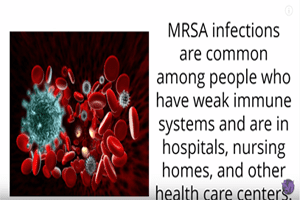
Students in Long Island Are Being Diagnosed With MRSA. In New York, school officials are reporting that students in towns across Long Island are being diagnosed with MRSA. Students in Commack and Westhampton Beach have been diagnosed with MRSA, bringing the total of children who have contracted the infection to four reported cases in approximately two […]

Students in Long Island Are Being Diagnosed With MRSA. In New York, school officials are reporting that students in towns across Long Island are being diagnosed with MRSA. Students in Commack and Westhampton Beach have been diagnosed with MRSA, bringing the total of children who have contracted the infection to four reported cases in approximately two weeks.
MRSA, or methicillin-resistant Staphylococcus aureus is a mutated staph that has emerged in recent years and, when not treated early, is resistant to all but the one antibiotic of last resort. Formerly used in the most potent cases, this drug is being used more and more and, as a result, MRSA is developing resistance to this last successful medication. MRSA, formerly only seen in hospitals and other health care facilities is now mainstreaming and has been seen to cause skin infections in healthy people who have not recently been hospitalized, the Center for Disease Control and Prevention (CDC) reports.
On Friday, James Feltman, superintendent of the Commack school district, sent an e-mail to parents advising them that a North Ridge Primary School student was diagnosed with MRSA. The district was scheduled to disinfect that school and the Burr Intermediate School this weekend. The second school was being disinfected because a sibling of the sick student attends that school. The two children’s school buses were pulled from their routes, also for disinfection. Superintendent Lynn Schwartz advised that the Westhampton Beach High School student was diagnosed late last week and returned to school after being treated. All affected areas were sanitized and parents were notified and advised to follow recommended guidelines.
According to the Centers for Disease Control and Prevention—which this month launched the National MRSA Education Initiative to teach parents how to protect children from skin infections caused by MRSA bacteria—MRSA is typically transmitted by direct skin-to-skin contact, from infected surfaces, or by sharing towels and other personal items. Lesions can be among MRSA’s symptoms; initial signs and symptoms include a bump or infected area that may be red, swollen, painful, warm, or may contain pus. Fever may be another symptom. Americans make over 12 million annual visits to doctors for skin infections such as those caused by staph; in some areas of the U.S., MRSA accounts for over half of such skin infections. In 2006, 94,000 Americans developed MRSA and CDC estimates place 2006’s MRSA death toll at 19,000, with 2,000 healthy people contracting community-based MRSA.
MRSA is a fully preventable disease and very treatable in early stages. With early and proper diagnosis—when there is a small eruption on the skin and before MRSA reaches the bloodstream—the infection is easily treated with general-purpose antibiotics, the sore is bandaged and kept clean, and the infection is cured. There is no down time and patients can resume activities with no risk of falling ill or contaminating others. Without treatment or with incorrect diagnosis and treatment, the infection spreads rapidly and can lead to respiratory failure and surgeries, attacking vital organs like the lungs and heart. Survivors are not always returned to their pre-MRSA condition, losing limbs, hearing, and full use of damaged organs.
The personal injury attorneys at Parker Waichman LLP offer free, no-obligation case evaluations. For more information, fill out our online contact form or call 1-800-YOURLAWYER (1-800-968-7529).


